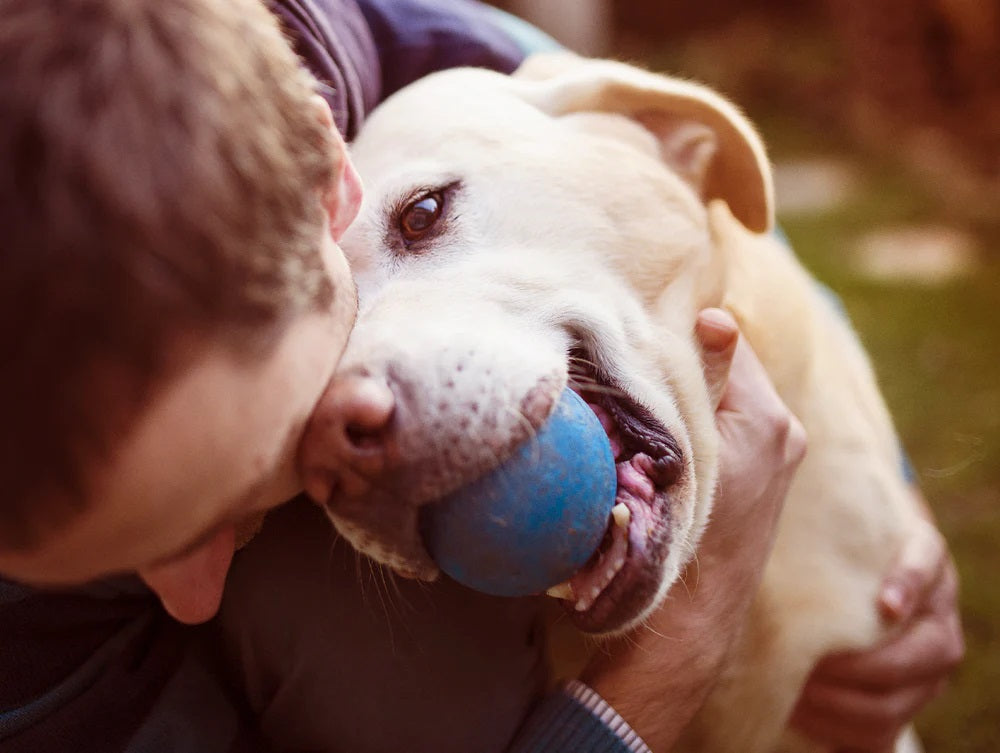
9 Simple and Natural Ways to Treat Anxiety in Dogs
Knowing how to treat dog anxiety is crucial when it comes to providing your dog with the quality of life they truly deserve. If neglected or left unchecked, anxiety can sooner or later lead to serious behavioral problems in your dog.
Contrary to popular belief, dog anxiety can be treated. Even more interesting, there are simple and natural ways to do this.
With over ten (10) years of experience in holistic medicine, my team and I at HomeoAnimo would like to let all dog owners and animal lovers everywhere know that there is no need to immediately resort to medication to treat dog anxiety.
Below, discover how to help a dog with anxiety naturally, as well as the causes and symptoms of this condition. We'll also reveal our natural remedy for anxiety in dogs.
What if we started by finding out what exactly dog anxiety is?
What is dog anxiety?
Dog anxiety is an uncontrolled surge of unease, apprehension, and fear that your sweet pooch may experience at any given moment.
While minor anxiety attacks are completely normal, anxiety that escalates to excessive levels, repeatedly and unexpectedly, is a different story.
If anxiety is not treated properly, it could lead to behavioral problems, such as excessive barking and territorial behavior. This includes unprovoked biting and destructive tendencies.
Now, let's look at the types of anxiety in dogs...
Types of Anxiety in Dogs
There are basically six (6) types of anxiety in dogs, which are briefly described below:
Age-related anxiety
Age-related anxiety is common in older dogs, whose bodies are already undergoing significant changes in hormone production and management. This hormonal imbalance typically leads to feelings of confusion and disorientation, making older dogs more prone to unexpected fear and discomfort.
Anxiety triggered by social factors
Social anxiety is common in dogs that are not used to being around other dogs and animals, or even people. This phenomenon is common in dogs that are regularly kept on leashes or in crates for very long periods of time.
Separation anxiety
Separation anxiety is typically seen in dogs that have been separated from their family in some way, or have experienced prolonged periods of solitude. This type of anxiety is seen, for example, when a dog is suddenly placed in the care of another guardian or family. Being naturally emotional, dogs can experience high levels of agitation and nervousness in these situations.
Additionally, separation anxiety can cause pregnant dogs to go into labor early due to unexpected hormonal imbalances. Other signs that a dog suffering from separation anxiety may be giving birth prematurely include a sudden drop in body temperature, excessive clinging, a drastic loss of appetite, and vomiting.
Anxiety triggered by environmental factors or changes
This type of anxiety in dogs is triggered by loud noises, unfamiliar smells, strange scenery, and other factors that can make the dog uncomfortable or frightened. Common examples of these factors include shouting, horns, sirens, and fireworks. The sound of thunder is also a stressor for many dogs.
Illness-related anxiety
When your canine companion is sick, their body experiences sudden hormonal fluctuations that heighten their senses. They will be more sensitive to sounds, changes in temperature, and taste, among other things, which can eventually lead to feelings of panic or fear.
However, compared to other types of canine anxiety, this one usually goes away after recovery.
Anxiety triggered by a traumatic experience
This type of anxiety in dogs is often triggered by a traumatic event or memory involving a specific place, person, or animal. The dog is recalling an injury, pain, or other distressing experience.
Traumatic anxiety is very common in shelter dogs who have had abusive owners or who have been neglected and abused for a long time.
Now that we've reviewed the causes of anxiety in dogs, let's discuss the symptoms you should look out for...
Symptoms of anxiety in dogs
The following are the most common indicators of anxiety in dogs:
- Sudden agitation
- Loss of appetite
- Excessive panting and salivation.
- Sudden mood changes
- Lack of playfulness
- Excessive chewing
- Unnecessary barking
- Sudden change in urination and defecation habits
- Destructive behavior
The next step on our checklist is how to help a dog with anxiety…
How to Calm a Dog with Anxiety
If you notice your beloved pet exhibiting symptoms of canine anxiety, here are some strategies you should keep in mind to provide relief:
Establish a “protected space”
Providing immediate calm and comfort should be your top priority when your dog is suffering from anxiety. That's why it's important to have a "safe space" where your sweet pooch can calm down and relieve their anxiety.
Any room can be used, as long as it is quiet, well-lit, and free of unnecessary noise or activity. While the area doesn't need to be isolated, it should be quiet and free of any potential stressors. Make sure your dog has access to plenty of food and water while in this protected space.
Maintain regular meal times
Did you know that one of the main triggers of anxiety in dogs is hunger? That's because the hormones released in your pet's body to signal hunger are the same ones released when they're experiencing anxiety.
So it's very likely that your dog is interpreting his hunger as anxiety.
Make sure to maintain regular mealtimes to avoid this problem. Additionally, cutting back on sugary treats also helps keep anxiety at bay. Too much sugar can cause sudden mood swings and make it difficult for your pooch to stay calm.
Make him exercise regularly
Vigorous exercise can help your dog combat anxiety. In addition to promoting the release of feel-good hormones and neurotransmitters like dopamine, vigorous exercise also helps improve their brain's ability to manage stress.
Long walks, ball games, and games of hide-and-seek are examples of exercises you can adopt.
If your canine companion has trouble staying active, you can also play games that stimulate their mental acuity. For example, use puzzles and toys that make gentle sounds and vibrations.
Give your dog lots of cuddles and massages
Did you know that regularly cuddling and massaging your dog activates the production of a feel-good hormone called oxytocin in their brain? Oxytocin not only helps relieve stress, but also reduces feelings of fear and anxiety.
The next time your beloved pooch feels anxious, gently massage the areas that are most tense, such as the forehead, ears, and chin.
As a bonus, in addition to helping them relax, frequent cuddles and massages strengthen the bond between you and your pet.
Reassure him with encouraging words and soft music
Auditory cues such as words and music can be used to help calm an anxious dog. What's really interesting is that they have the same effect as cuddles and massages.
Don't be too quick to scold your dog when he exhibits anxiety-related behavioral responses, such as excessive chewing or unnecessary barking. Instead, soothe him with encouraging words and soft music. Simply telling your dog that you love him in a calm, reassuring voice can go a long way.
If you're having trouble finding music to relax your dog, a lullaby will do the trick.
Know the triggers to avoid
It's essential that you familiarize yourself with your dog's anxiety triggers so you can make the necessary changes to your routine. These include, for example, the places you visit, the activities you do, the sounds your dog regularly hears, and the people and animals you spend time with.
Taking note of these triggers can be very helpful in managing and alleviating your pet's feelings of anxiety. This will give you a better chance of keeping them calm and preventing episodes of full-blown anxiety.
Introduce gradual socialization
If your dog's anxiety occurs around other people or animals, one solution is to introduce gradual socialization. This might involve taking your dog for frequent short walks in a familiar environment, such as your neighborhood.
However, the idea here is to gradually increase the duration of the walk with each outing.
In addition to providing your dog with regular exercise, they'll also have the opportunity to indirectly "encounter" new faces, smells, sounds, and sights. This repeated practice helps build your pet's confidence, making them less prone to long-term anxiety.
Turn stressors and triggers into positives
Although it may seem strange at first, it is possible to turn stressors into positive ones if you apply a strategy called "counterconditioning." To do this, simply, when a stressor is present, reduce your dog's tendency to be anxious by giving him a treat.
For example, if your dog becomes anxious when the vacuum cleaner is running, simply give him a loving hug and then offer him a treat as a reward for his bravery. In addition to being reassured, he will view this experience as a positive one.
Now let's take a look at a natural remedy for dog anxiety that you should consider adding to your dog care essentials list...
A most effective natural remedy
HomeoAnimo's CalmAnimo product is an all-natural, high-quality option designed to support your canine companion when they are suffering from anxiety.
It contains gelsemium, argentum nitricum, phosphorus, calcarea carbonica, lycopodium, arnica, and staphysagria, which help maintain nervous system balance and improve your pet's social behavior. In addition, the various natural homeopathic ingredients work together to promote a general sense of well-being and serenity.
To use CalmAnimo to minimize your dog's anxiety, simply spray a squirt either in water or directly into the mouth until symptoms have disappeared.
Now let's address some frequently asked questions about dog anxiety...
FAQs you should keep in mind
Here are some of the most frequently asked questions about dog anxiety:
What is stressed dog body language?
Stressed dog body language is a physiological sign a dog exhibits when feeling extremely stressed or anxious. Common examples include tucking the tail between the legs, unnecessary barking and growling, excessive licking and panting, and aimless pacing.
A dog exhibiting stressed body language is likely to exhibit symptoms of anxiety sooner or later if the stressors affecting him are neglected or left unchecked.
Can anxiety cause my dog to pee in the house?
The short answer is yes. Sudden changes in your canine companion's urination and defecation habits are one of the most common indicators of dog anxiety. Moreover, this behavior can be observed even in housebroken or housetrained dogs suffering from this condition.
Can dog food cause anxiety?
While dog food doesn't cause anxiety per se, excess protein and carbohydrates can increase the likelihood of blood sugar spikes and drops. When blood sugar levels aren't controlled, they tend to cause anxiety and stress.
That's why it's essential to closely monitor your canine companion's diet to help them calm down. It's also recommended to have reliable support, such as HomeoAnimo's CalmAnimo product, to help deal with dog anxiety, which can arise when you least expect it.
This concludes our article on helping an anxious dog. I hope you learned a lot from it.
If you'd like to learn more about anxiety in dogs, as well as the natural products and options that best meet your pet's health needs, sign up for our free health advice service now.
And never forget that our natural methods support you and your pet every step of the way!



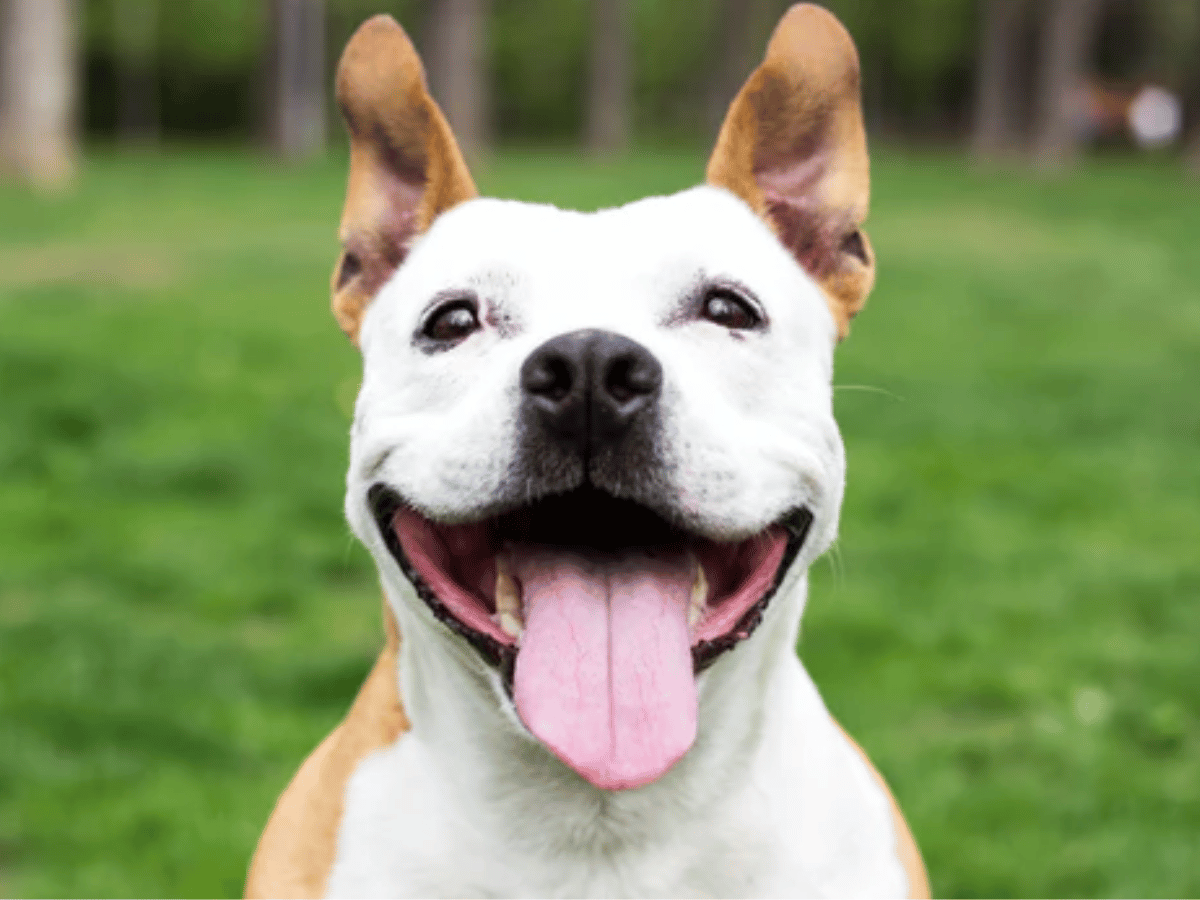
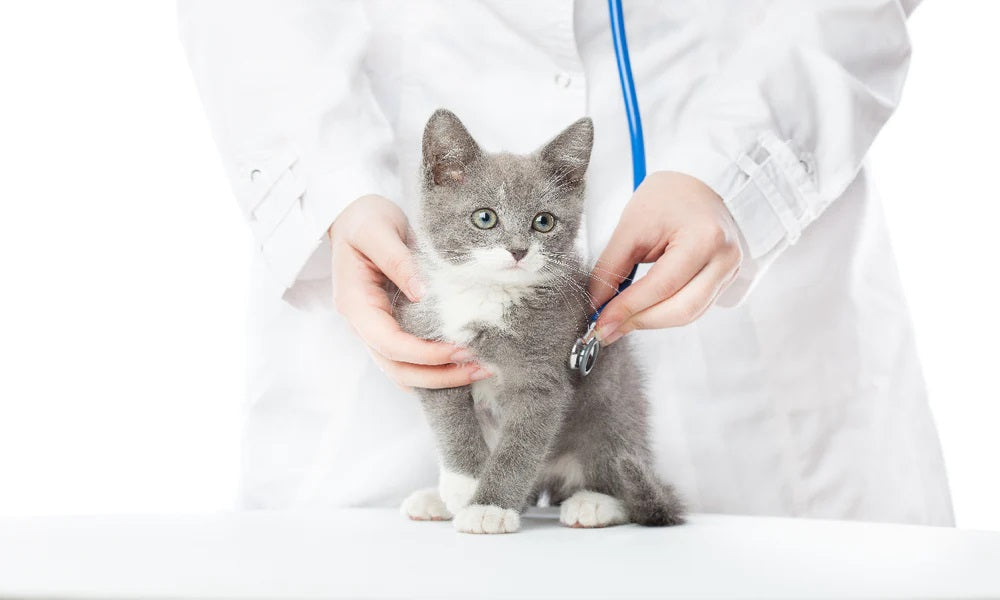

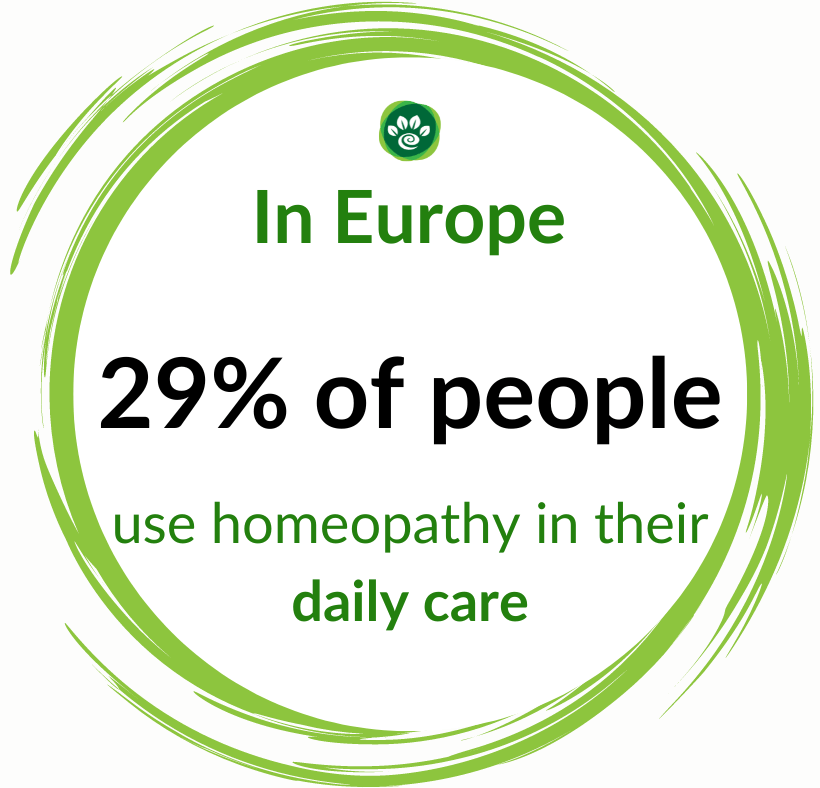
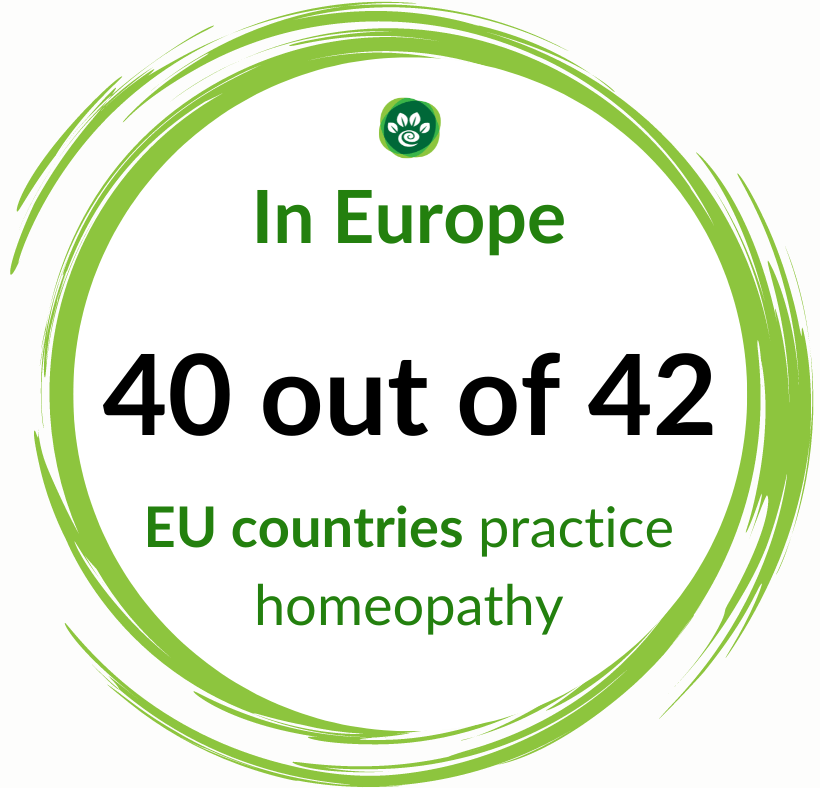












Leave a comment
This site is protected by hCaptcha and the hCaptcha Privacy Policy and Terms of Service apply.